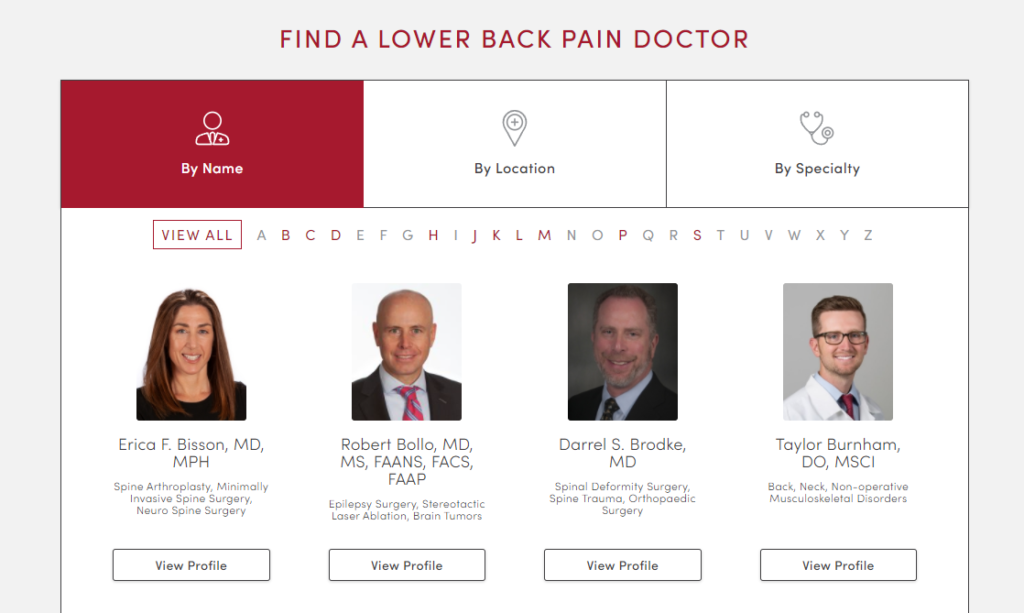The Problem
In academic healthcare the organization is typically structured based on academic departments. These departments are incentivized to generate revenue for there own department and compete with other departments for the same patients and procedures. This creates siloes of information with competing and similar content and makes for a confusing user experience.
The Solution
Customer Need – Organize services by patient thinking and shared services vs academic hierarchy to meet customer need.
Business Need – Show that by combining services on a common page SEO/SEM increases as does the conversion rate and technical solutions can be put in place to equally share conversions.
I was able to successfully bring together multiple departments (Orthopedics and Neurology) into a single Spine services site. This took numerous meetings with service line leaders, department chairs, and marketing to explain the problems this was creating for our team, the customer and the departments. Some of the problems I helped them understand were:
- having multiple sites for spine treatment was causing us to split our efforts and limiting our teams capacity
- google looks at same and similar content and decides to ignore one while elevating the other
- we couldn’t effectively market both sites with paid search as we would be competing against our selves and driving up the bid
- we were creating confusion for our patients a paradox of choice in our own site search and navigation by creating unnecessary decisions such as having to understand the department hierarchy and choosing which department to visit instead of just having them focus on the treatment and condition
The competing departments understood the problem but where concerned about how fair the funneling of patients would be. We wanted to create an equal division of the appointments between the departments but didn’t want to force the choice of department on the patient. The solution that was agreed to was to have a single scheduling number across the site and form that would funnel appointments alternating each day between departments.

Additionally both departments doctors and providers were listed on the page so a patient could do there own research and base there decision on the individual provider rather then an internal hierarchy. Our secondary audience was referring physicians, on occasion they really did care about the department but for patients they wanted to look at the individual doctors, or find who was the closest and most convenient for less specialized care. This is were our “find something tool” came in handy allowing us to show doctors based on any of those filters: by name, by location or by specialty.

The departments have successfully shared patients together for many years now, we meet frequently to identify shared needs and address challenges. Patient volumes have continued to increase and patients have a better experience.
Lessons Learned
You will need champions within competing departments who are willing to work together and be willing to compromise and agree to shared processes. Things like discount coupons that one group wants to run and the other doesn’t, different scheduling process like one wanting self service online scheduling and the other only wanting a form to request an appointment can all complicate things for the customer. Beliefs that one group is better then the other group all add to the challenge of bringing groups together. Keep the focus on the customer, bring quantitative data to help them see the size of the problem and qualitative data to help them them have empathy for the user.